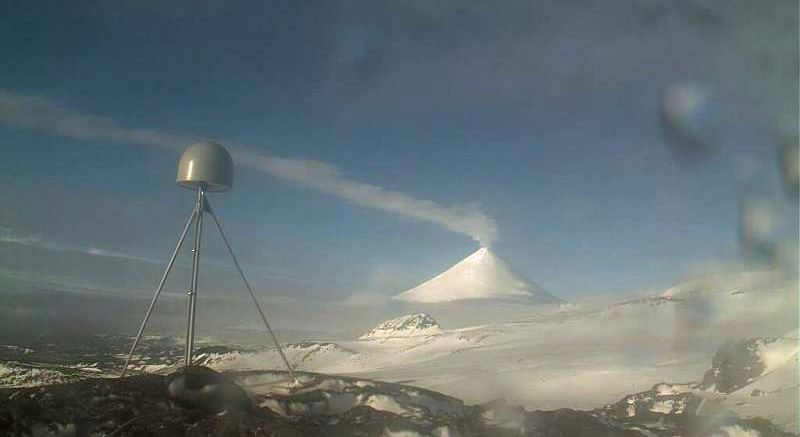
2014. Photo by Janet Schaefer, AVO/USGS
Scientists at the Alaska Volcano Observatory are going to be keeping a close eye on Shishaldin Volcano over the weekend.
The volcano emitted a small ash cloud that was identified early Friday morning. AVO geologist Chris Waythomas said the cloud drifted south of the volcano and dissipated.
“However, Shishaldin is a very frequently active volcano, and this could mean that we’re heading into an eruptive period,” Waythomas said. “But it may not necessarily, but it wouldn’t surprise us if the volcano started getting more — more active.”
Shishaldin was upgraded to a yellow alert level last week after abnormal behavior began. Waythomas said this ash cloud seems to have come from a combination of magma close to the surface, and increased steaming and temperatures in the crater.
Waythomas said some of the seismic monitoring stations that track Shishaldin are still out of order. He said they are relying on two functioning stations to look for earthquakes inside the volcano and other changes that could foretell an eruption.
“It can be explosive, and it could put ash clouds up to flight levels,” he said. “That would not be unusual for this volcano to do that.”
Shishaldin’s eruption in 1999 sent ash plumes as high as 45,000 feet above sealevel. It last erupted in 2004, and the last time it showed unrest like this current period was in 2009.
Shishaldin is the highest peak in the Aleutians. It’s also the world’s most symmetrical glacier-covered, conical volcano.
Waythomas said the two other yellow-alert volcanoes in the Aleutians –Cleveland and Veniaminoff — are mostly quiet right now.
Annie Ropeik is a reporter for KUCB in Unalaska.




